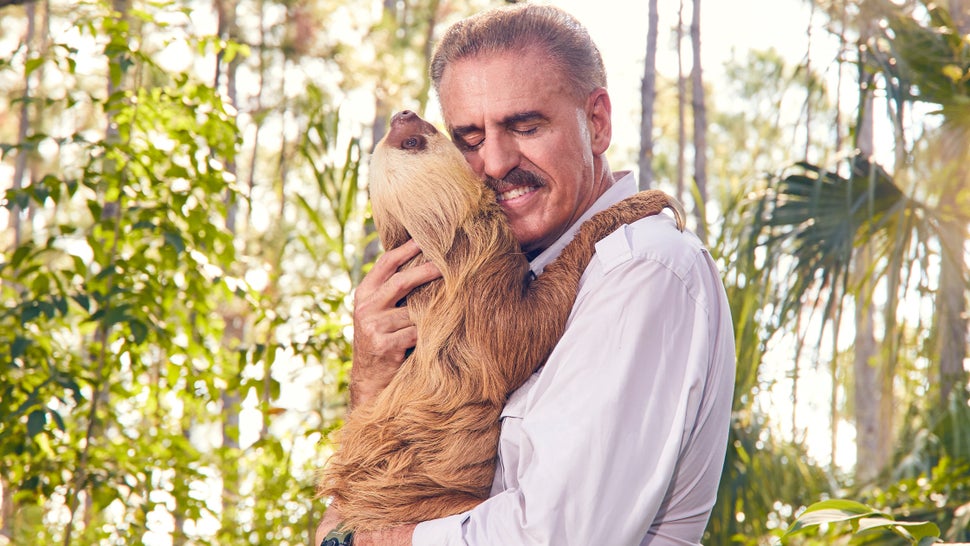
When your office involves a charging rhinoceros or a hungry Humboldt penguin, the last thing you’re worried about is workplace fashion. But a functional wardrobe is of the utmost importance.
Each day, these zookeepers don their uniforms knowing that, just like everything they do, their clothing has a direct effect on the animals in their care. And while it’s not a glamorous job, it’s the one they love to do.
Rick Smith, Penguin & Puffin Coast bird keeper/dive safety officer at the Saint Louis Zoo
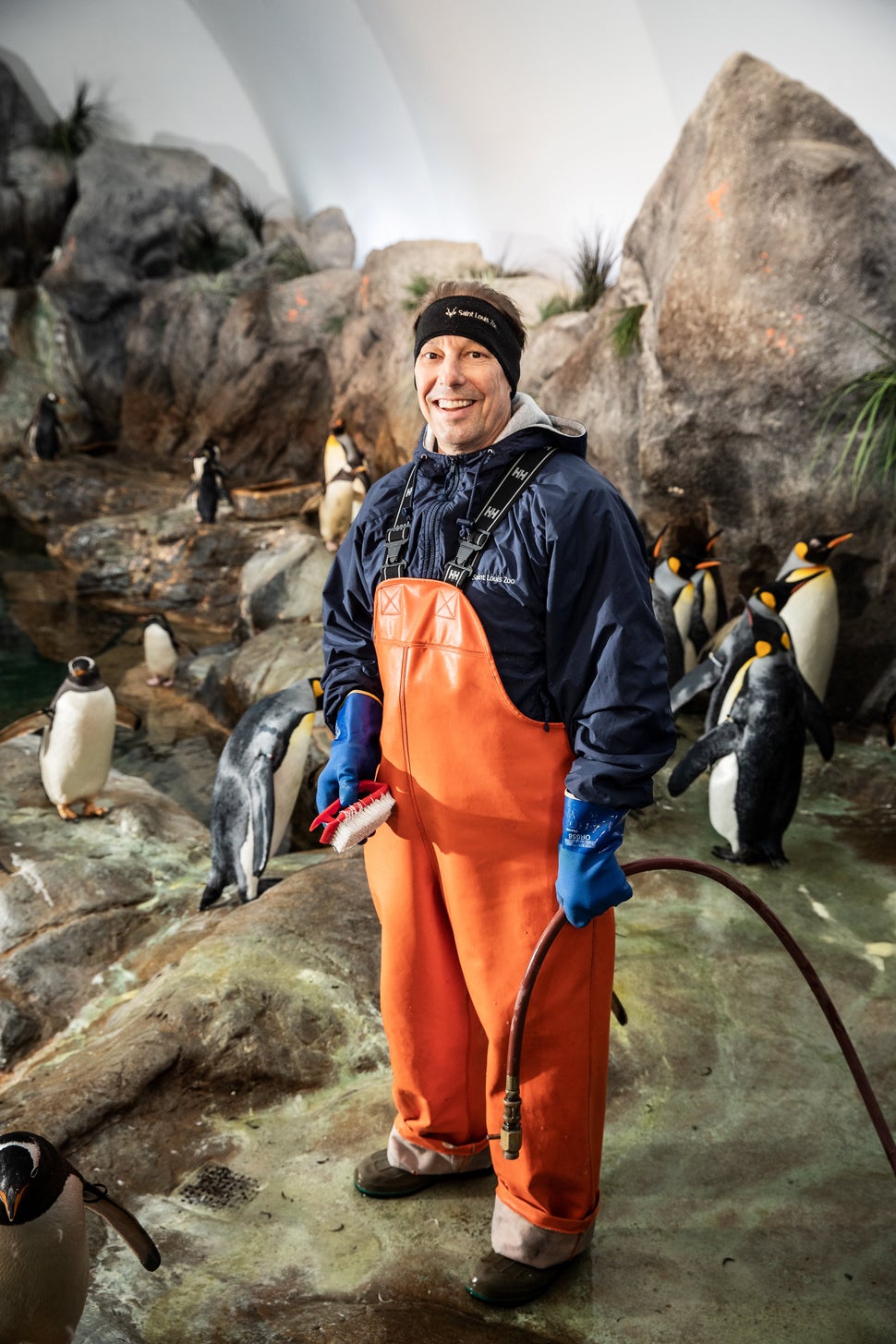
Rick Smith describes his uniform as more commercial fisherman than zookeeper, which makes sense: He handles a lot of fish each day, working with five species of penguins and two species of puffins. He’s responsible for the cleaning, feeding and health observation of the zoo’s seabirds.
“Basically, we run a seafood restaurant and hotel service for the penguins,” Smith said. “We clean their exhibit, bring their lovely piles of different types of fish down to them, and they hand-feed or eat from a buffet tray. If one of them is exhibiting unusual behavior, we may consult our veterinarian, and we have some geriatric birds who need medications.”

Toting fish, scrubbing algae off exhibit rocks and working in low temps near water requires special clothing. Smith usually wears rubber boots and fishing bibs to stay dry, and he tries to stick to wool and cotton shirts, having found those materials stay warmer in wet situations. As a dive safety officer, Smith oversees the zoo’s 40 scuba divers, who clean and inspect all the underwater habitats on the grounds. Diving requires an entirely different wardrobe.
“Because we’re going underwater to clean, we wear full face masks,” he said. “Scuba clothing includes boots, a wetsuit, hood and gloves. For penguin divers, a 7-millimeter wetsuit still isn’t warm enough, so we like to wear a dive skin underneath.”
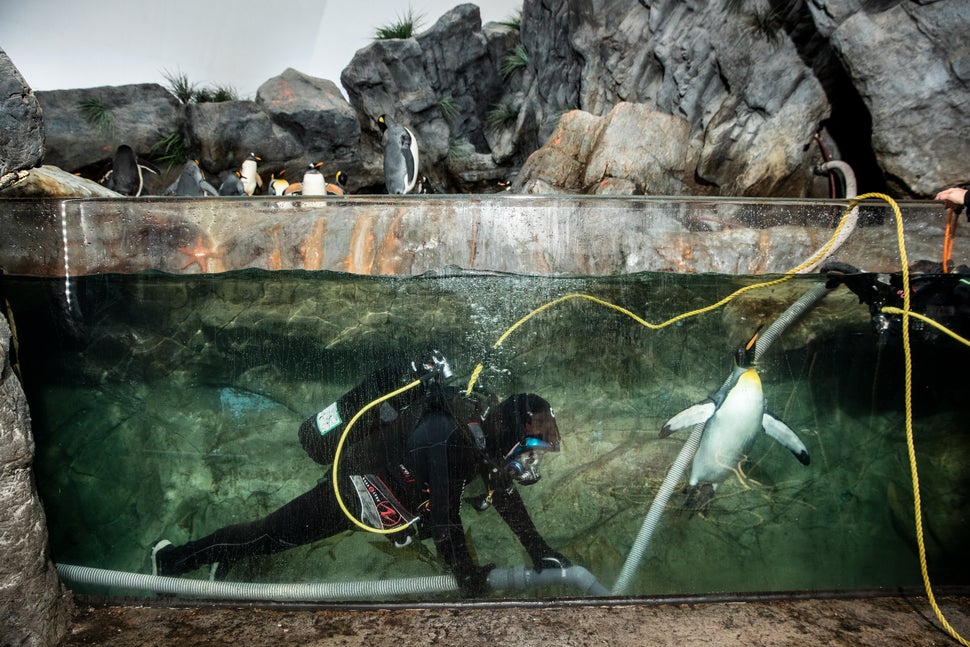
Peeling off wetsuits and ending the day smelling like fish isn’t for everyone, but Smith has been at it for 30 years. He cares about the animals in his keep, as well as educating the public about their native habitats.
“I don’t mind doing all this changing and getting wet in the cold because I really care for these environments,” he said. “We care for our animals’ welfare and their habitats, even if I have to spend 45 minutes underwater vacuuming excrement.”
Dianne Mohr, keeper at Regenstein Center for African Apes at the Lincoln Park Zoo
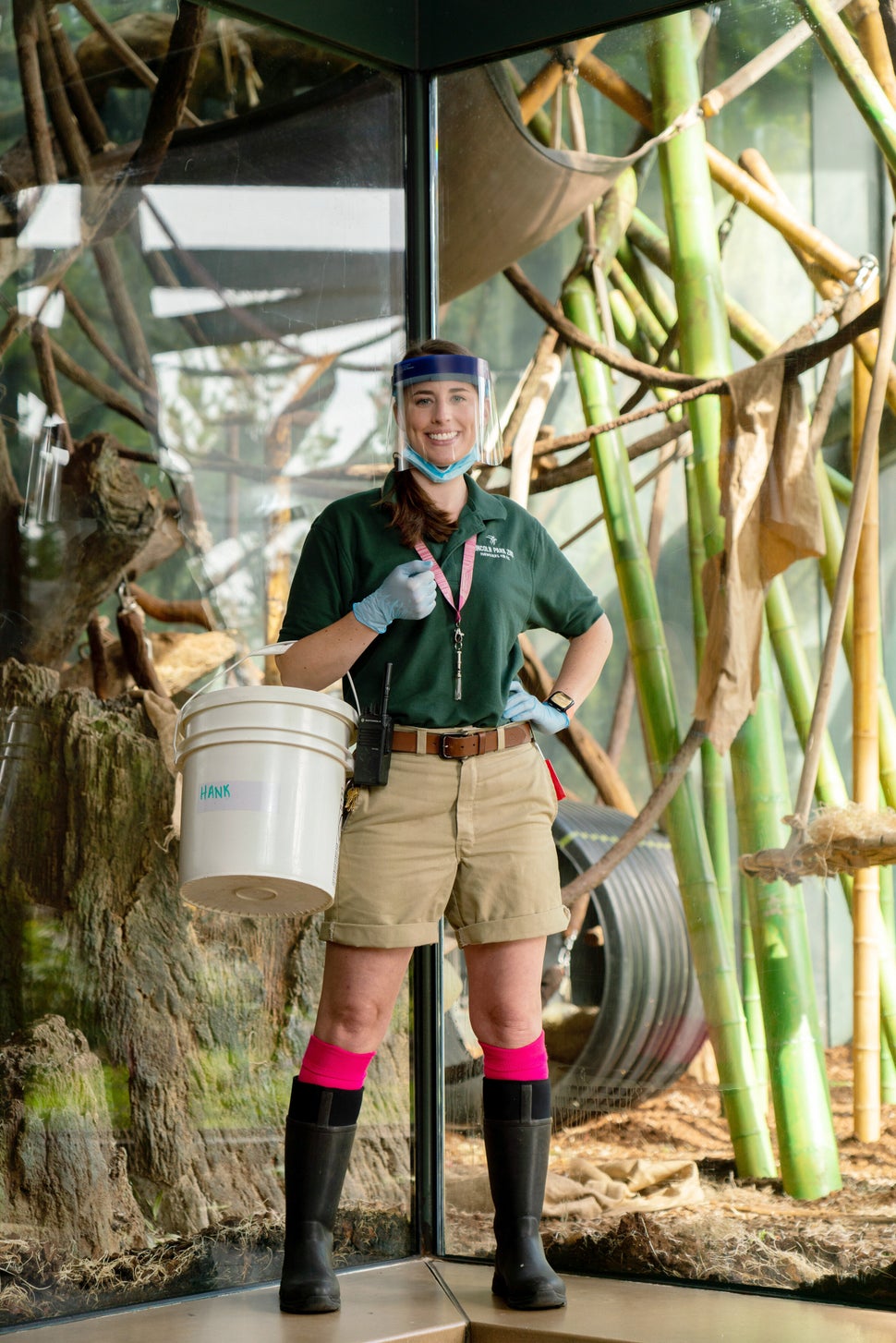
Keeper Dianne Mohr watches over the 13 gorillas and 10 chimpanzees at the Lincoln Park Zoo in Chicago. Each day, she works directly with these great apes for training sessions, giving them medications, cleaning their exhibits and more.
“We have one chimpanzee in particular who loves to look at earrings, so I try to change them out every day for him.”
- Dianne Mohr
She wears what she calls a stereotypical zookeeper uniform: khaki shorts, a green polo and work boots. But because of the similarities between humans and apes, this close contact means Mohr must take special precautions to prevent spreading illness to the animals.
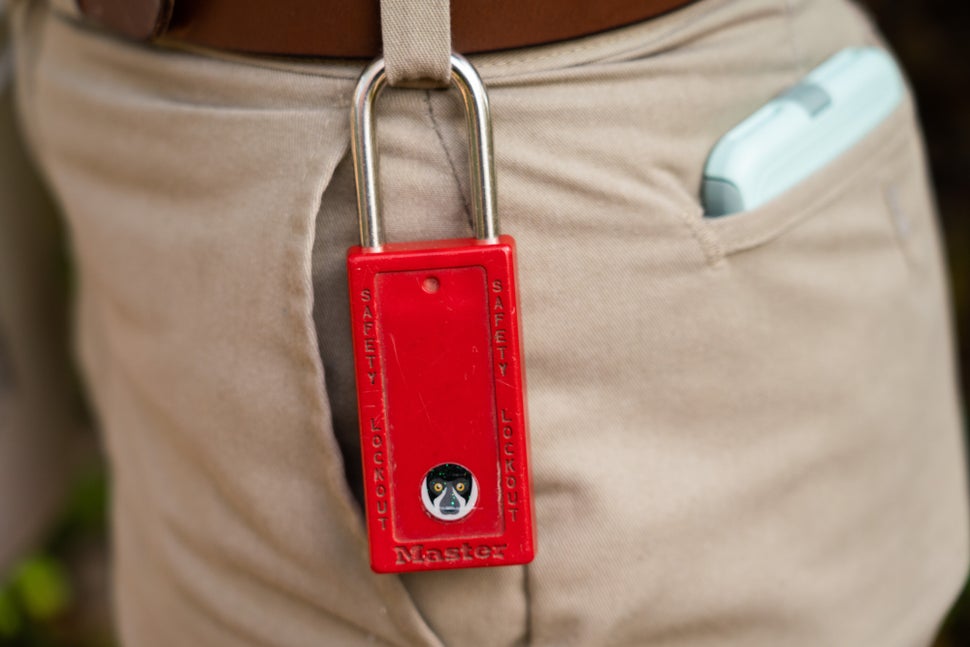
“Humans are great apes, just like chimpanzees and gorillas,” she explained. “Not only can we give them cold germs, but they can give us germs if they have a cold. We wear face masks every day to help minimize germ transfer, rubber latex gloves when we’re feeding and cleaning, face shields when we’re hosing so we don’t get anything in our eyes, and even shower caps.”
Mohr and her colleagues arrive at work in their street clothes — which are, admittedly, sometimes pajamas — and change into their uniforms at the center. This helps maintain the clothes’ sterility.
“Especially during cold and flu season, and being in the heart of Chicago taking public transportation, you never know what’s going around,” she said. “We change into our uniforms at work, wash our uniforms at work, and shower before we leave work or right when we get home.”
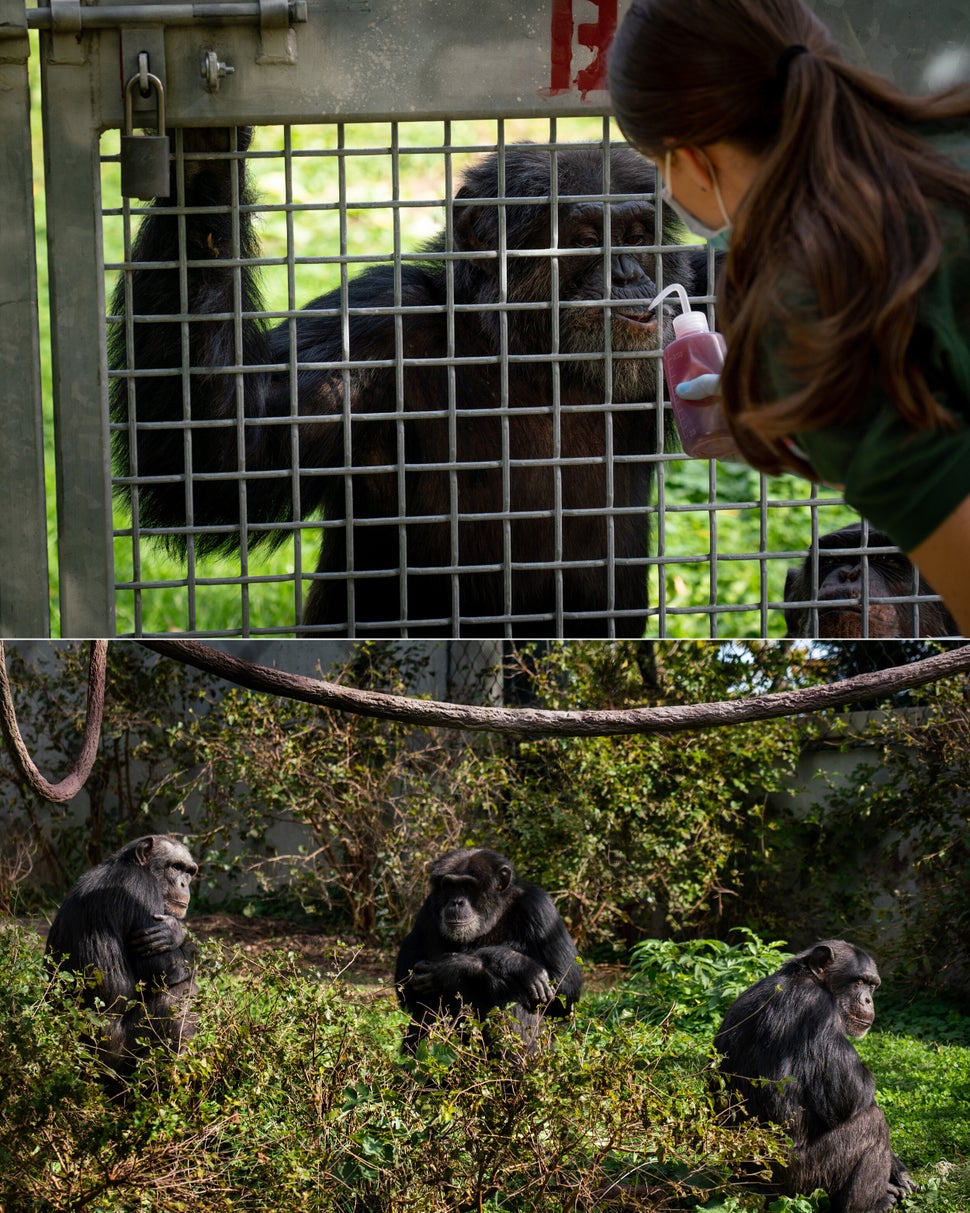
Dangly accessories are a hazard for Mohr and the apes, but some self-expression is possible, and even helps her bond with the apes in her care.
“Some keepers like to wear funny knee socks under their rubber boots to add a little color,” she said. “We can wear post or stud earrings, and we have one chimpanzee in particular who loves to look at earrings, so I try to change them out every day for him. His name is Zachary. He’s everyone’s favorite. He’ll point at his ears and then try to get a closer look at ours.”
Ron Magill, zoo goodwill ambassador and communications director, Zoo Miami
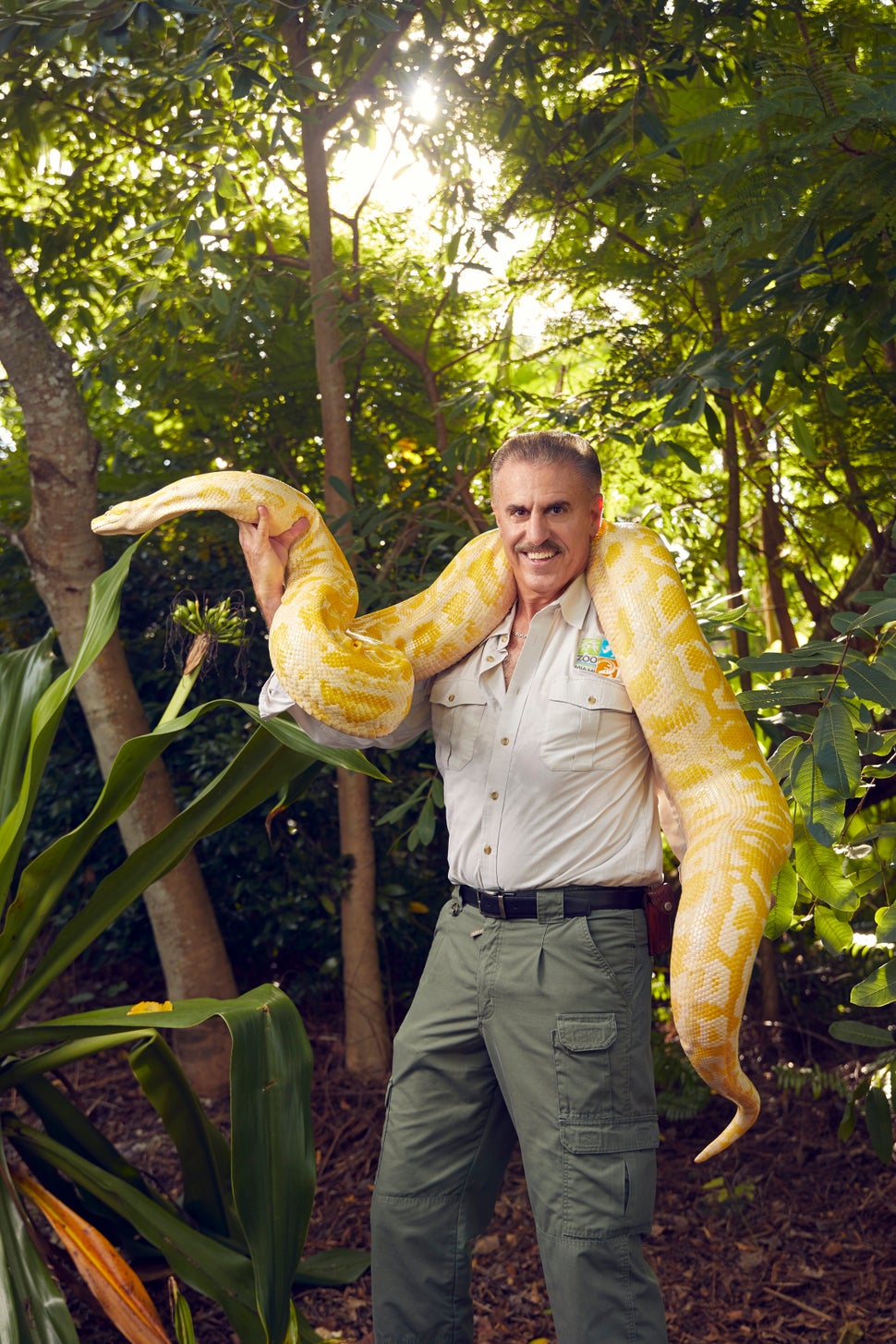
You may recognize Ron Magill from animal handling appearances on “Good Morning America,” the “Today” show or his new documentary series, “Wild Kingdom With Ron Magill.” He has been a zookeeper at Zoo Miami for more than 40 years and still interacts with a variety of animals daily, so he’s had time to perfect his work attire.
“I wear 100% cotton shirts, usually with long sleeves; they protect me from sun and bugs, or I can roll them up to be more comfortable,” he told HuffPost. “I wear cargo pants so if I have to sit or squat, there’s nothing to fall out of my back pockets. I always wear earth tones, like khakis or dark browns. They’re cooler, and in Miami we deal with heat more than anything.”
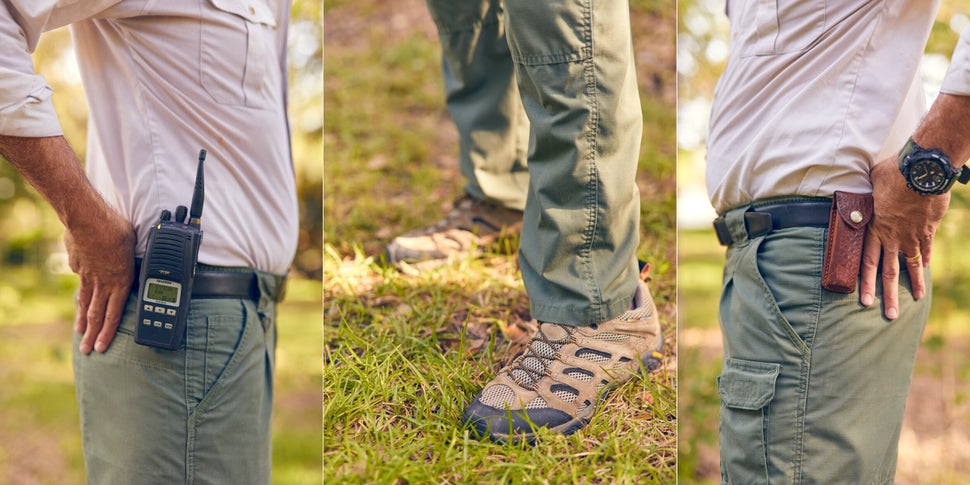
As part of Miami-Dade County’s Parks and Recreation Department, zoo employees are beholden to a dress code that includes steel-toe boots for safety. Magill had to appeal this rule and opt for sneakers after learning that steel-toe boots don’t easily fit into chain-link fences when needing to escape an angry crocodile or rhino, which has happened. More than once.
But Magill isn’t always in Miami. As a documentarian, he does plenty of traveling, and his clothing is always changing. He recently visited the Brazilian Pantanal to study jaguars, giant otters and hyacinth macaws. Before that, he was in Antarctica shooting a documentary, wearing quite the opposite of his Miami uniform: thermal underwear, ski pants, layers of fleece, sweatshirts, a parka and gloves.
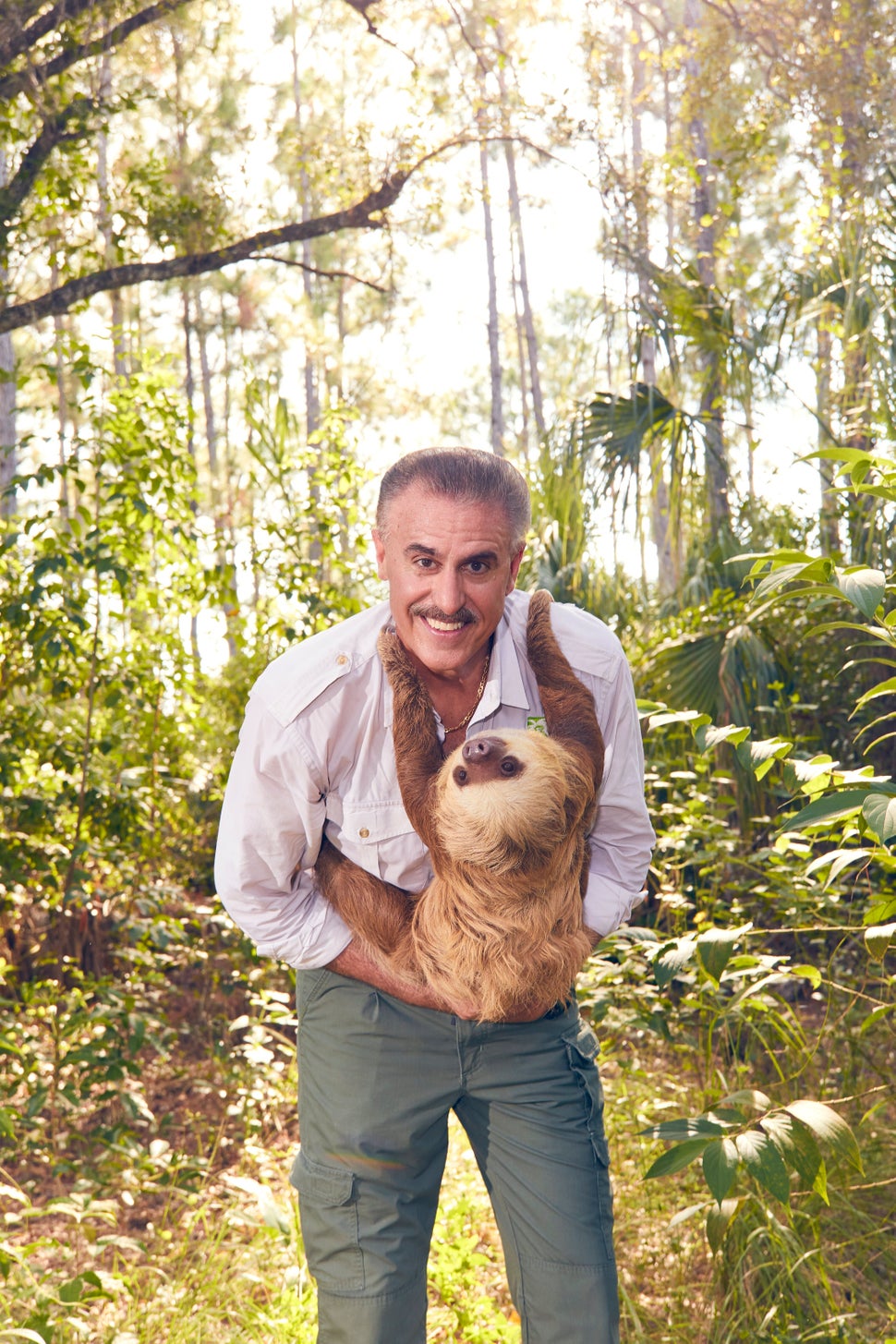
Sometimes, duct tape is his favorite accessory, using it to tape shut the openings of his pants and socks if he’s walking through an area known for leeches. But Magill has a few staples that showcase his passion.
“My logo is embroidered on my uniform,” he said. “I have these metal silhouettes of animals inlaid into my belt. I’ve got a Casio watch I’ve taken to Antarctica and the rainforests of India looking for tigers. It works perfectly after 20 years.”